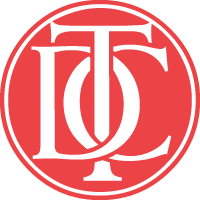Meet the Judges of TDC62 Communication and Typeface Design Competitions
The Type Directors Club annual competition is recognized worldwide as the premier typographic design competition. This is due, in part, to the esteemed judges that participate each year. This year is no different. It’s with great pride and gratitude that we announce this year’s judges.
Enter your typographic focused design work by December 11th, 2015 for a chance to appear in Typography 37, the Annual of the Type Directors Club and be part of our 7 global traveling exhibitions.
TDC62 COMMUNICATION DESIGN JUDGES
 Darhil Crooks, NYCtheatlantic.com
Darhil Crooks, NYCtheatlantic.com
Darhil Crooks is Creative Director of The Atlantic. In this role, Crooks oversees the art direction of The Atlantic across its platforms: in print, online, and on mobile and tablet devices. Before joining The Atlantic, Crooks worked as Creative Director of Ebony magazine, where he oversaw the first cover-to-cover redesign in the title’s then 66-year history. Working closely with editors, photographers, and illustrators, he helped redefine the magazine’s visual identity.
Prior to that, Crooks served as the Art Director of Esquire magazine, developing design concepts and layouts; conceptualizing, commissioning, and directing photo shoots; and editing photography. He also helped develop and design Esquire’s iPad app, which was named a finalist for best mobile edition by the American Society of Magazine Editors in 2011. Before joining Esquire, Crooks was the Associate Art Director at Complex and Men’s Journal. He began his design career at The Source. Crooks studied Graphic Design at the School of Visual Arts in New York City.
 Sagi Haviv, NYC (cgstudionyc.com)
Sagi Haviv, NYC (cgstudionyc.com)
Sagi Haviv is a partner and designer at Chermayeff & Geismar & Haviv. Among the over 50 identity programs he has designed are the logos for the Library of Congress, CFA Institute, Harvard University Press, Conservation International, Women’s World Banking, and Armani Exchange.
Sagi designed the award-winning animation “Logomotion,” a ten-minute tribute to the firm’s famous trademarks that was not only the first animated trademark sequence of such scope, but also introduced a new approach to showcasing a firm’s portfolio. Sagi’s other motion graphics work includes the opening sequences for PBS documentary series such as Carrier, Circus, and Half The Sky. Sagi joined the firm in 2003 after graduating from The Cooper Union School of Art. He teaches Visual Identity Design at The School of Visual Arts in New York City. A frequent speaker, Sagi has given lectures and conducted workshops at AIGA conferences, the HOW conference, the Onassis Foundation, as well as at design schools and institutions around the world, including an annual workshop at Centro School of Design in Mexico City. In 2014, he served as the chair of the CLIO awards design jury. Sagi is coauthor of Identify: Basic Principles of Identity Design in the Iconic Trademarks of Chermayeff & Geismar (Print Publishers, 2011).
 Robbin Schiff, NYC (penguinrandomhouse.com)
Robbin Schiff, NYC (penguinrandomhouse.com)
Robbin Schiff is VP, Executive Director, at Random House where she has designed and art-directed award-winning book jackets for the past 24 years.
 Jarik van Sluijs, LA (picagency.com)
Jarik van Sluijs, LA (picagency.com)
Jarik Van Sluijs is co-founder and creative director at PIC Agency, an entertainment and motion design boutique based in Los Angeles, California.
Moving from his native Holland to Los Angeles in 2000, Jarik started his professional career in motion picture advertising as a designer, animator, and editor. In 2001, he earned the Hollywood Reporter Key Art Award for his work on the theatrical teaser for A.I. He became a creative director in 2003, and started working on title sequences for feature films like Van Helsing, The Punisher, and The Bourne Supremacy. Since 2005 he’s been a founding partner at PIC Agency, and has created more than 100 feature film title sequences including The Illusionist, The Kingdom, Ghostrider, Bhutto, Sex and the City, Cloverfield, Twilight, Cabin in the Woods, and Miss You Already.
 Karen Welman, UK (pearlfisher.com)
Karen Welman, UK (pearlfisher.com)
Karen Welman has always been the curious creative explorer, pushing us beyond what we can see by continually questioning what is possible. Count on her for the unique, unexpected (and often frank!) viewpoint.
She loves working with brave thinkers; those prepared to take a risk are often the ones who create real change. Our Green & Blacks design was a defining moment for her and she’s equally proud of our work for Absolut Vodka.
Innovation and turning great ideas into action has been a lifelong passion of Karen. Her patented inventions include 37º, a range of temperature-regulating baby clothes featuring NASA-developed fabrics which picked up awards all over the world. Karen was also named in the Top 10 Global Female Inventors a few years ago.
Karen is always working on something new and in recent years cofounded private member’s gym The Library: it’s this diversity and the prospect of venturing head-first into the unknown that keeps her burning as brightly as when she started out over 30 years ago.
 Forest Young, NY (interbrand.com)
Forest Young, NY (interbrand.com)
Forest Young is a designer and educator. He is the Senior Creative Director in Interbrand’s New York studio, leading design for select clients including AT&T, YP, Vine, Google and Microsoft. Forest is also a critic in graphic design at the Yale School of Art and a board member of the AIGA/NY. His work has been exhibited at MoMA, the Royal Ontario Museum and at international biennials. He is the recipient of countless design accolades including the Gold Design Lion at Cannes and the ADC Best-in-Show Black Cube. Forest received his MFA from the Yale School of Art where he was awarded the Mark Whistler Prize.
 Julia Zeltser, NY (hyperakt.com)
Julia Zeltser, NY (hyperakt.com)
Julia Zeltser is a founding partner and creative director at Hyperakt. With over 15 years of design experience in brand development, visualizations, and web, Julia has been instrumental in establishing Hyperakt’s creative output.
Julia leads a multi-disciplinary team of designers in a wide range of assignments. She has advised clients such as ACLU, Ford Foundation, and UNICEF to extend their brand in print and interactive media. Julia initiated and leads Lunch Talks at Hyperakt: a monthly event to ignite collaboration and idea-sharing among the design community.
Julia has received accolades from organizations such as Society of Illustrators, Communication Arts, Brand New, and How Magazine for her design work. She was born in Ukraine and graduated from Parsons The New School of Design in New York. She lives with her husband, Lenny, and her two kids, in Park Slope, Brooklyn.
TDC 2016 TYPEFACE DESIGN JUDGES
 Veronika Burian, Czech Republic (type-together.com)
Veronika Burian, Czech Republic (type-together.com)
Veronika Burian studied Industrial Design in Munich and worked in that capacity in Vienna and Milan over a few years. Discovering her true passion for type, she graduated with distinction from the MA in Typeface Design in Reading, UK, in 2003 and worked as type designer at DaltonMaag in London for a few years. After staying for some time in Boulder, USA, and her hometown Prague she is now living and working in Spain.
Veronika Burian is a type designer and co-founder of the independent type foundry TypeTogether, publishing award-winning typefaces and collaborating on tailored typefaces for a variety of clients. She is also involved with Alphabettes.org, a showcase for work and research on lettering, typography and type design by women and continues to give lectures and workshops at international conferences and universities.
 Stéphane Elbaz, NY (stephaneelbaz.com)
Stéphane Elbaz, NY (stephaneelbaz.com)
Originally from Paris, France, Stéphane Elbaz is a graphic and type designer currently living and working in New York City. He recently joined First Look Media where he serves as Head of Product Design, Magazines. In the last few years he devoted much of his time to digital publishing platforms. In addition, he continued his type and brand design practice.
For Code and Theory he led visual design on various projects including Vanity Fair and GQ for Condé Nast France, the LA Times, Interview, and Art in America. As an independent designer, Stephane recently created a brand typeface for Sephora and participated in brand projects for companies in sectors ranging from culture and fashion to the energy industry. In 2009 he was awarded the Certificate of Excellence in Type Design from the Type Directors Club of New York for his type family Geneo.
 Alexander Tochilovsky, NY (lubalincenter.cooper.edu)
Alexander Tochilovsky, NY (lubalincenter.cooper.edu)
Alexander Tochilovsky received his BFA from the Cooper Union and his MFA from Cranbrook Academy of Art. He is the owner/operator, together with Mike Essl, of The Studio of ME/AT, a graphic design studio in New York City, focusing on print design. He is also an adjunct instructor at the Cooper Union, and the Curator of the Herb Lubalin Study Center of Design and Typography. In 2009 he co-curated the exhibition Lubalin Now, and since 2010 he has curated three other exhibitions: Appetite (2010), Pharma (2011), Type@Cooper (2012) & Image of the Studio (2013), all at the Cooper Union. Alexander teaches the history and theory component of typeface design at Type@Cooper, the postgraduate certificate program he co-founded in 2010.
 Petr van Blokland, Netherlands (petr.com)
Petr van Blokland, Netherlands (petr.com)
Born in Gouda, The Netherlands, in 1956, Petr van Blokland graduated Cum Laude from the graphic arts program at the Royal Academy of Fine Arts in the Hague. He has been a freelance designer since 1980. He specializes in systematic design – typically building directories, forms systems, corporate identity programs, etc. He has taught graphic design, typography, and type design for many years at the Royal Academy of Fine Arts in The Hague and at the Academy of Fine Arts, Arnhem. His first typeface is Proforma, a large series commissioned by Purup, Danish manufacturer of forms preparation systems, now released for general use by Font Bureau.
His work brought him ATypI’s coveted Charles Peignot Prize in 1988. His statements on typeface design are well-known: On Quality “The same bottomline that applies to typography also applies to typefaces: when no one notices, the aim has been accomplished.” On Experience “To be accomplished in all aspects of the design process is the fundamental demand on the designer. Experience and talent counts, not the availability of equipment.” On Digitization “By carrying out the digitization as an integral part of the design process, maximum control is exercised over the eventual reproducing of the typeface, thereby avoiding any errors of interpretation.” On New Typefaces “Why design a new typeface? After all, there are so many. There is a misconception that typefaces are not designed. They are simply here. Yet new typefaces are designed and this need is increasingly present in view of the current technological advances.”

